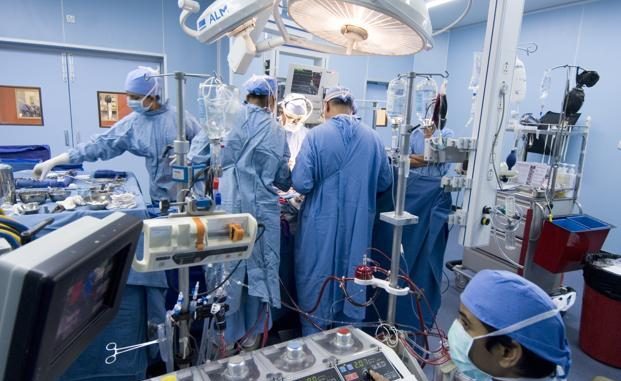
Technology today has seeped into every facet of our lives. From shopping, ordering food, booking vacations to money transfers, everything is going digital. Software-driven businesses are changing the world as we speak. Why, then, are we not seeing this transformation in India’s healthcare sector?
Globally, the healthcare industry is spending millions on research and development in areas like genome editing, genetic or DNA testing and personalized medicine. We’ve witnessed breakthrough innovations like wearables (Fitbit, Misfit, etc.) and fitness apps have become ubiquitous.
In addition, there have been significant enhancements in back-end healthcare applications and platforms in hospitals and clinics, supporting better capture and sharing of patient health information. The adage of prevention is better than cure is witnessed more than ever in how patients’ health information is enabling doctors and giving patients more control over their own health.
However, in our country we still have a long way to go for overhauling the existing healthcare infrastructure to one that is truly technology driven. In medical emergency situations, the lack of readily available patient health information at the point of care still impacts millions of people each year, leading to adverse health conditions and even death. Across the globe today, a variety of these problems can be solved easily as healthcare providers are adopting technologies to improve, simplify and better manage the quality of their services. The adoption of electronic medical records (EMRs), for example, has led to improved efficiency and enhanced patient care.
The first step in the process of technology adoption is to capture all patient health information at the point of care, especially hospitals and clinics. This information is shared with health information exchanges (HIEs)—a regional/central repository for health records—where it can be accessed easily by doctors and hospitals. In emergency situations, where the patient might not be in a condition to respond to doctors, it saves duplication of tests, the associated costs and precious time, in instances where minutes can make a difference between life and death.
A vast majority of our hospitals and clinics still run on paper-based systems and have no centralized system to store medical records. We require a regulatory framework that mandates and regulates the use of EMRs and other clinical applications. The framework should also define standards for storing healthcare data to enable sharing of information across applications and organizations (HL7, DICOM, ICD, etc.). Similar to the US, the government can define a time-bound plan to roll out initiatives with clear incentives and penalties. Given the strong mobile penetration, India should also define the standards for capturing/storing healthcare information across mobile, consumer health and IoT (Internet of Things) devices—which will rapidly accelerate use of mobile devices and telemedicine.
The next critical step is to ensure that the data is interoperable, that is, it is accessible by all healthcare organizations. Also, given the sensitive nature of patient health information, the data should be transferred from one system to another with complete accuracy and no errors in data transmission or data interpretation between systems. This is vital since data transfer across healthcare providers would have a significant impact on the timeliness, quality and cost of healthcare delivery. To ensure interoperability, we need to define common healthcare information standards for data sharing across all provider systems and define a long-term sustainable financial model for HIEs.
With this kind of an EMR system in place, doctors would have a 360-degree view of your health, so you can skip unnecessary paperwork and redundant tests to get fast, efficient and holistic treatment every time. In addition, we would have multiple opportunities to aggregate the patient health information for better care delivery—both, at an individual level as well as across the population. Use of analytics on the data can give us insights into trends, curbing disease outbreaks and a better understanding of the health of our population.
This journey would require a regulatory push initially with market forces accelerating the momentum in due course. With the government’s focus on “Digital India”, we have a tremendous opportunity before us to truly bring smart healthcare to our populace. What then could be a better time than now?
Source: Livemint

Leave a Reply